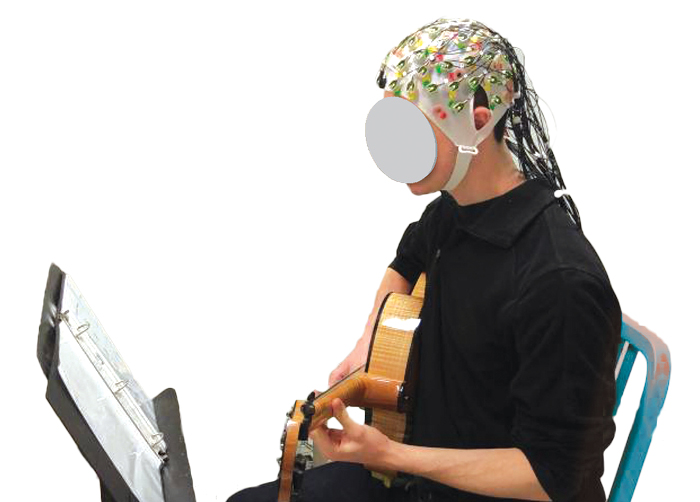
_John Kounios
Kounios is a professor of psychology in the College of Arts and Sciences and director of the PhD program in Applied Cognitive and Brain Sciences.
Creativity is often thought of as a product of the brain’s right hemisphere — innovative people are labeled “right-brain thinkers” while “left-brain thinkers” are more analytical and logical. But some neuroscientists are skeptical of this idea, arguing that an ability as complex as human creativity must draw on vast swaths of both hemispheres.
A brain-imaging study out of Drexel’s Creativity Research Lab sheds light on this controversy by studying the brain activity of jazz guitarists during improvisation.

the_brain_on_jazz
The study was led by John Kounios with David Rosen, a doctoral graduate and co-founder of a music-tech startup. In this image, Rosen is improvising jazz while his brain activity is recorded.
David Rosen, a recent Drexel doctoral graduate and co-founder of a music-technology startup called Secret Chord Laboratories, led the study along with Professor John Kounios, who directs the Creativity Research Lab.
They found that creativity is, in fact, driven primarily by the right hemisphere in musicians who are comparatively inexperienced at improvisation. However, they also found that musicians who are highly experienced at improvisation rely primarily on their left hemisphere, suggesting that creativity is a “right-brain ability” when a person deals with an unfamiliar situation but draws on well-learned, left-hemisphere routines when a person is experienced at the task.
“If creativity is defined in terms of the quality of a product, such as a song, invention, poem or painting, then the left hemisphere plays a key role,” says Kounios. “However, if creativity is understood as a person’s ability to deal with novel, unfamiliar situations, as is the case for novice improvisers, then the right hemisphere plays the leading role.”
